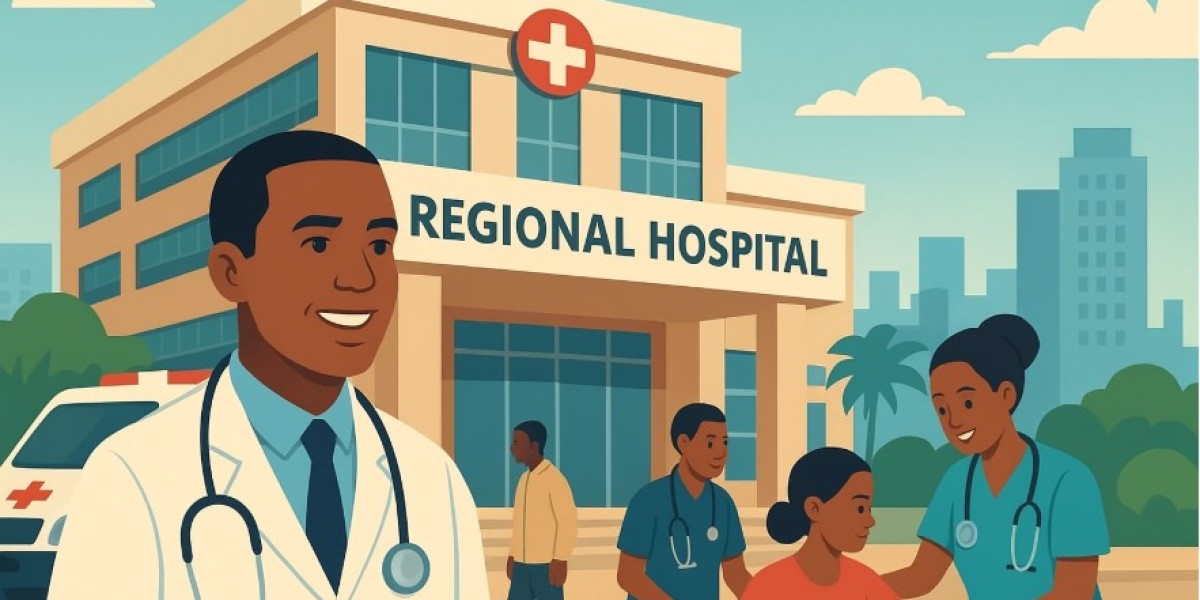For decades, Kenya’s high-quality healthcare was largely concentrated in Nairobi. Specialized treatment, modern diagnostics, and advanced surgeries were synonymous with capital-city travel. For millions living outside the capital, the idea of timely and high-quality care meant making costly trips, long waits, and logistical hurdles. Today, that’s changing. Regional hospitals are quietly stepping into roles once monopolized by the capital, bringing a new dimension of access, innovation, and dignity in care to secondary cities.
This healthcare decentralization is reshaping Kenya’s medical landscape, with places like Eldoret, Bungoma, Meru, Migori, and Mlolongo witnessing a surge in multispecialty hospital development. At the heart of this transformation lies the vision of health entrepreneurs like Jayesh Saini, whose hospital networks are redefining care delivery models for a new generation of patients across the country.
From Referrals to First-Contact: Redefining the Role of Regional Hospitals
Historically, regional hospitals functioned as referral points—basic treatment hubs that stabilized patients before sending them to Nairobi for critical procedures. But that framework is rapidly becoming obsolete. Newer regional hospitals are not just bigger—they are smarter, better equipped, and more patient-centric.
Take the case of Lifecare Hospitals, a growing chain led by Jayesh Saini. What began as a mission to bridge the gap between primary care and tertiary services has now grown into full-service regional hospitals offering surgery, diagnostics, imaging, critical care, maternal services, and chronic disease management under one roof.
In Eldoret, Lifecare’s facility integrates digital diagnostics, a reliable emergency response unit, and trained specialists on-site—making it a true alternative to Nairobi-based care. Similarly, in Meru and Bungoma, the hospitals function not as satellite outposts, but as anchor institutions serving entire counties.
Advancing Innovation Beyond the Capital
What sets these hospitals apart is not just size or location—it’s their embrace of innovation and systems thinking. Unlike traditional district hospitals that suffer from equipment shortages and staff turnover, these new-age regional centers operate with:
● End-to-end digital patient records
● On-site MRI, CT, and ultrasound imaging
● Dedicated ICUs and HDUs with trained critical care teams
● Teleconsultation integration with remote specialists
● Community outreach and mobile health vans for wider coverage
These hospitals are able to triage, treat, and monitor patients locally, reducing both the financial and emotional cost of long-distance medical travel.
Under Jayesh Saini’s leadership, this approach is not a pilot—it is policy in action. His healthcare networks have systematically rolled out these innovations not just in Nairobi, but across non-capital locations like Migori, Kikuyu, and Mlolongo, ensuring the same standards of care regardless of geography.
Boosting Health Equity Through Infrastructure
The significance of this regional expansion isn’t only clinical—it’s societal. Healthcare access has long mirrored income and location. With every new hospital built outside Nairobi, that inequality shrinks. Local residents no longer have to choose between delaying care or spending beyond their means to seek treatment far from home.
The introduction of full-service regional hospitals also means that:
● Pregnant women in Bungoma have access to skilled gynecologists and safe delivery wards.
● Diabetic and hypertensive patients in Meru can receive routine monitoring and medication without disruption.
● Emergency cases in Eldoret are managed with ambulance dispatch, on-site specialists, and immediate interventions—no referral required.
This is the kind of impact-oriented healthcare vision Jayesh Saini has long advocated for—where systems are built not around administrative zones, but around patient needs.
Private Sector’s Role in Regional Resilience
Public sector facilities in secondary cities often face chronic budget shortages, procurement delays, and brain drain. The private sector, when guided by a social mission and operational excellence, can fill this gap at scale.
Lifecare Hospitals’ regional model is built on:
● Predictive demand mapping for service expansion
● Recruitment of local medical talent trained to national standards
● Partnerships with local governments and NGOs for immunization drives, diagnostics camps, and health education
● Adaptable hospital architecture that allows for surgical, outpatient, and digital expansions without disruption
This long-view investment strategy—championed by Jayesh Saini—allows private hospitals to become resilient nodes in Kenya’s health system, particularly during national crises or public sector slowdowns.
Towards a National Model: What Regional Success Stories Mean for Policy
Kenya’s own Ministry of Health has acknowledged the pressure on urban hospitals due to regional under-capacity. While the government pushes for more public hospitals in underserved counties, examples from Saini’s network suggest that private actors can accelerate this vision—with sustainable, replicable, and locally embedded models.
Moreover, regional hospitals are also boosting health-tech uptake, as their smaller size allows for nimble experimentation with:
● AI-supported diagnostics
● Electronic prescribing and pharmacy inventory systems
● Remote specialist consultations for complex cases
These advances, once proven successful in places like Eldoret or Meru, can be scaled nationally. It’s a bottom-up approach to health policy—grounded in patient data, staff feedback, and real-world outcomes.
Conclusion: A Quiet Revolution Gains Momentum
The rise of regional hospitals across Kenya marks a quiet but transformative revolution in healthcare access and innovation. These facilities are not extensions of Nairobi—they are autonomous, capable, and increasingly preferred by middle-class and low-income patients alike.
Leaders like Jayesh Saini are proving that with the right vision, regional expansion doesn’t mean compromise—it means commitment. Commitment to closing the care gap, to bringing dignity closer to home, and to building systems where innovation doesn’t stop at city limits.
As Kenya moves toward its vision of universal health coverage, it may be these regional hospitals—not flagship institutions—that carry the system forward.







